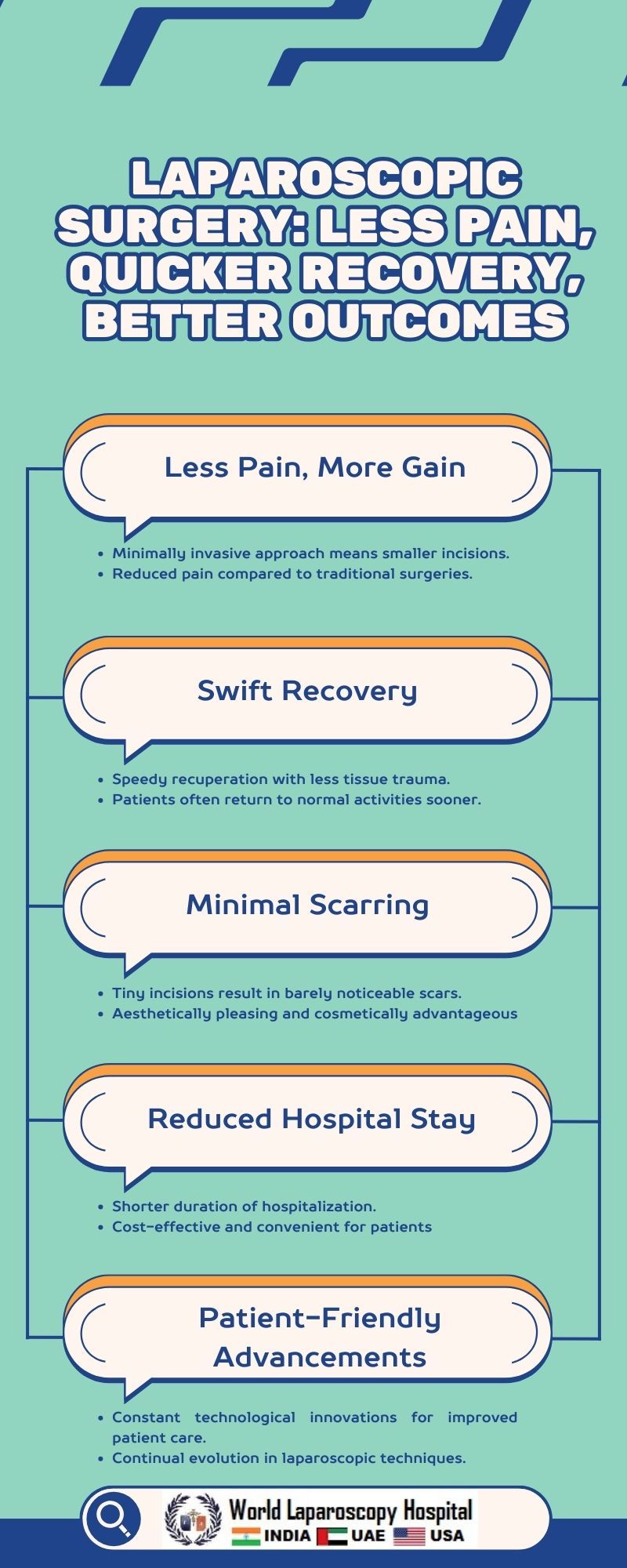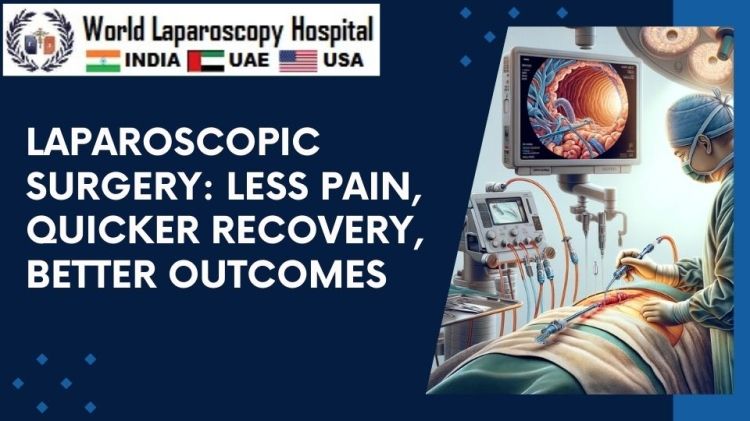Revolutionizing Healthcare: The Comprehensive Advantages of Laparoscopic Surgery
Introduction:
In the ever-evolving landscape of medical advancements, laparoscopic surgery stands out as a transformative approach, promising patients a trifecta of benefits: less pain, quicker recovery, and improved overall outcomes. This minimally invasive surgical technique has revolutionized the way many procedures are performed, significantly enhancing patient well-being and postoperative experiences.

Understanding Laparoscopic Surgery
Laparoscopic surgery, also known as minimally invasive surgery or keyhole surgery, involves the use of small incisions and specialized instruments equipped with cameras. These instruments allow surgeons to visualize and operate inside the body with unparalleled precision. Compared to traditional open surgeries, laparoscopic procedures often result in smaller scars, reduced blood loss, and decreased postoperative pain.
Evolution of Laparoscopic Surgery
The roots of laparoscopic surgery can be traced back to the early 20th century, but it wasn't until the late 1980s and early 1990s that technological advancements propelled it into mainstream medical practice. The introduction of high-definition cameras, improved instruments, and enhanced training for surgeons paved the way for the widespread adoption of laparoscopic techniques across various medical specialties.
How Laparoscopic Surgery Works
The fundamental principle of laparoscopic surgery involves making small incisions through which a laparoscope (a long, thin tube with a high-resolution camera) and specialized instruments are inserted. The camera transmits real-time images to a monitor, allowing surgeons to navigate and perform intricate procedures with precision. The smaller incisions reduce trauma to surrounding tissues and organs, resulting in less pain and faster recovery.
Benefits of Laparoscopic Surgery
Reduced Pain and Discomfort
One of the most significant advantages of laparoscopic surgery is the substantial reduction in postoperative pain. Traditional open surgeries often necessitate larger incisions, leading to more extensive tissue damage and nerve disruption. In contrast, the smaller incisions in laparoscopic procedures cause less trauma, minimizing pain and discomfort for patients during the recovery period.
Quicker Recovery Times
The minimally invasive nature of laparoscopic surgery translates to quicker recovery times for patients. With smaller wounds and less disturbance to surrounding tissues, the body can heal more efficiently. Patients undergoing laparoscopic procedures typically experience shorter hospital stays and a faster return to their daily activities compared to those undergoing traditional open surgeries.
Improved Cosmetic Outcomes
The cosmetic aspect is not to be overlooked. Laparoscopic surgery leaves smaller, often nearly invisible, scars compared to the more noticeable and sometimes extensive scars associated with open surgeries. This not only contributes to a better aesthetic outcome but also positively impacts the psychological well-being of patients, reducing concerns about body image.
Applications of Laparoscopic Surgery
Gynecological Procedures
Laparoscopic surgery has become a cornerstone in gynecological interventions. Common procedures such as hysterectomy, ovarian cyst removal, and tubal ligation can now be performed with minimal invasiveness. The benefits extend beyond the operating room, as patients experience shorter hospital stays, less postoperative pain, and faster recoveries.
Gastrointestinal Surgeries
In the realm of gastrointestinal surgeries, laparoscopic techniques have transformed procedures like cholecystectomy (gallbladder removal), appendectomy, and colorectal surgeries. Patients undergoing laparoscopic gastrointestinal surgeries often report reduced pain, shorter hospital stays, and a quicker return to normal digestive function.
Urological Interventions
Laparoscopic surgery has made significant inroads in urology, offering less invasive options for procedures such as prostatectomy, nephrectomy, and urinary tract reconstruction. The advantages include reduced blood loss, lower rates of infection, and faster recovery times, enhancing the overall quality of care for urological patients.
Challenges and Considerations
Learning Curve for Surgeons
While laparoscopic surgery offers numerous benefits, it comes with a learning curve for surgeons. Mastering the precise hand-eye coordination required for manipulating instruments in a three-dimensional space can be challenging. However, with dedicated training programs and advancements in virtual reality simulations, the learning curve is gradually diminishing.
Cost Considerations
The initial costs associated with laparoscopic equipment and training may be higher than those for traditional open surgeries. However, studies suggest that the overall cost-effectiveness of laparoscopic procedures becomes evident when considering reduced hospital stays, quicker recovery times, and a lower likelihood of postoperative complications.
Future Directions and Innovations
Robotic-Assisted Laparoscopic Surgery
Robotic-assisted laparoscopic surgery represents a frontier of innovation in minimally invasive procedures. Robotic systems offer surgeons enhanced precision, improved dexterity, and the ability to navigate complex anatomical structures with greater ease. As robotic technology continues to evolve, it is poised to further revolutionize the field, potentially expanding the applicability of laparoscopic techniques.
Integration of Artificial Intelligence
The integration of artificial intelligence (AI) into laparoscopic surgery holds promise for optimizing procedural outcomes. AI algorithms can assist surgeons in real-time by analyzing data from imaging systems, providing insights into decision-making and enhancing overall procedural efficiency. This synergy between technology and surgical expertise could define the future landscape of laparoscopic interventions.
Conclusion:
Laparoscopic surgery has undeniably transformed the field of surgery, offering patients a plethora of advantages that extend beyond the operating room. From reduced pain and quicker recovery times to improved cosmetic outcomes, the benefits are compelling. As technology continues to advance, and surgeons further refine their skills, the future holds exciting possibilities for laparoscopic surgery, reaffirming its status as a cornerstone of modern healthcare.


